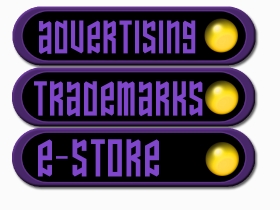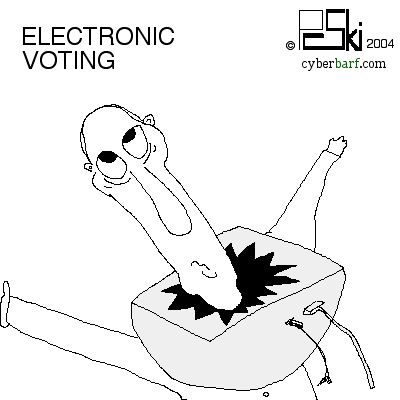cyberbarf
EXAMINE THE NET WAY OF LIFE
Vol. 4 No. 4
November, 2004
So, how did you like Ralph, our new site intern?
He has shown up the last three issues.



Ralph will appear in future editions as events warrant.
IN THIS ISSUE:
VOTE THE E-VOTE * PRINTING MONEY IN SPACE * FILM AT 11





